
How to Improve SEO for Therapists and Counselors [Get New Patients]
How to Improve SEO for Therapists and Counselors [Rank in Google]…..
Do you need help marketing your chiropractic website? Book a Free Consultation.
The spine is a vital part of the human body. Without it, human beings would find it difficult to move or take part in other rewarding activities.
Apart from this, people also need your service as a chiropractor when they have issues like pains in the neck, arms, legs, or even headaches.
As a chiropractor, there’s a large pool of people to get enough patients for your practice. For instance, about 22 million Americans visit a chiropractor annually and 19 million U.S. adults used chiropractic to seek relief from pain.
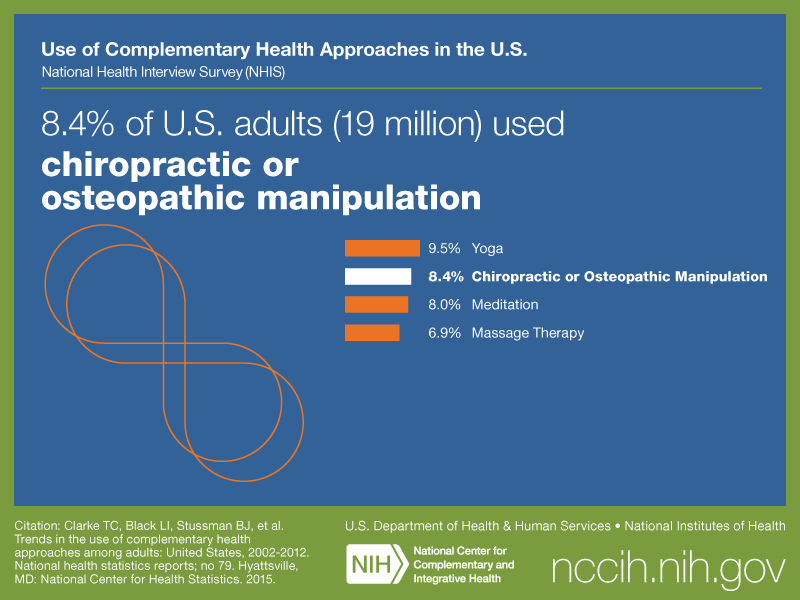
Do you get enough patients for your practice? Trust me, most medical professionals find it difficult to get patients from the internet but it’s doable and I’ll show you how.
If you’re reading this guide, you probably need more patients for your chiropractic business. And you’re in the right place.
Your potential patients use search engines while looking for a chiropractor.
How often do you appear in those search results? You need to improve your search engine optimization (SEO) game for your practice and get involved in other marketing techniques.
There are many steps to take to improve your rankings for important chiropractic keywords and we’ll consider them shortly.
But first, let’s find the keywords.
Keyword research is important. It doesn’t matter whether you’re a real estate agent or insurance broker, chiropractor, your potential client or patient usually inputs a string of words popularly known as keywords into the Google search box.
Only website pages that are relevant to those keywords will appear in the search results.

The main point is that if you don’t target the keywords potential clients are searching for, your chiropractic website will not show up in Google first page. Consequently, you’ll not generate leads to your practice.
Worse, you might even rank for the wrong keywords and bring in organic traffic that has no need for your chiropractic services.
That’s why one of the most important activities to carry out is keyword research. No matter how many SEO tactics you do right, if you’re targeting the wrong keywords or no keywords at all, all your efforts would be wasted.
Having said that, it’s difficult to come up with the keywords your potential clients are searching by merely thinking about it.
The use of keyword research tools will reveal the keywords your potential patients are searching for and how many times (usually in a month) they’re searching for them.
There are many SEO tools that can help with your research. My favorites are KeywordTool.io, SEMRush, and Ahrefs,
In this guide, I’ll show you how to use KeywordTool.io and Ubersuggest. These two tools are free to use. KeywordTool.io has a paid option but you can still use the free version to find keywords.
To use KeywordTool.io, visit the website and enter your main keyword (for example, Chiropractors in New York). Select the country and click on “Search.”
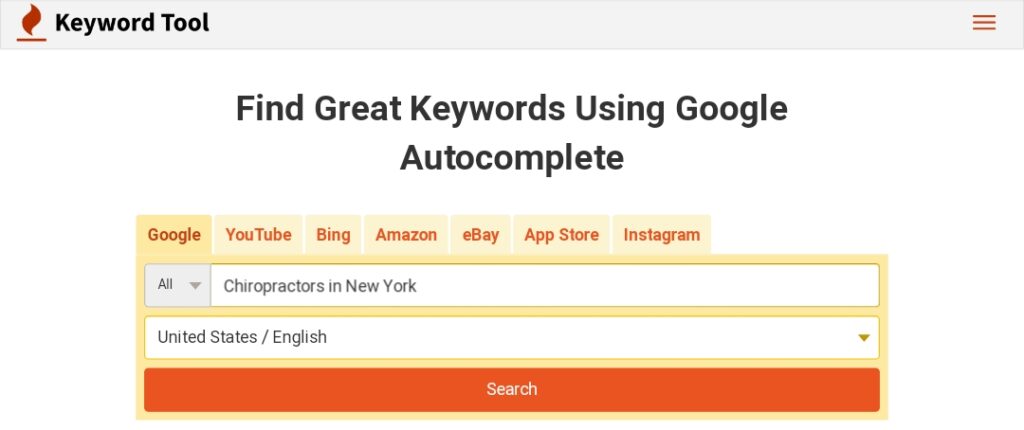
KeywordTool.io gives you a bigger list of related keywords using the Google autocomplete feature. From there, you can compile a list of keywords related to chiropractic that people are searching for.
However, without the paid account, you’ll be unable to access more details of these keyword suggestions like the search volume, trend, etc.
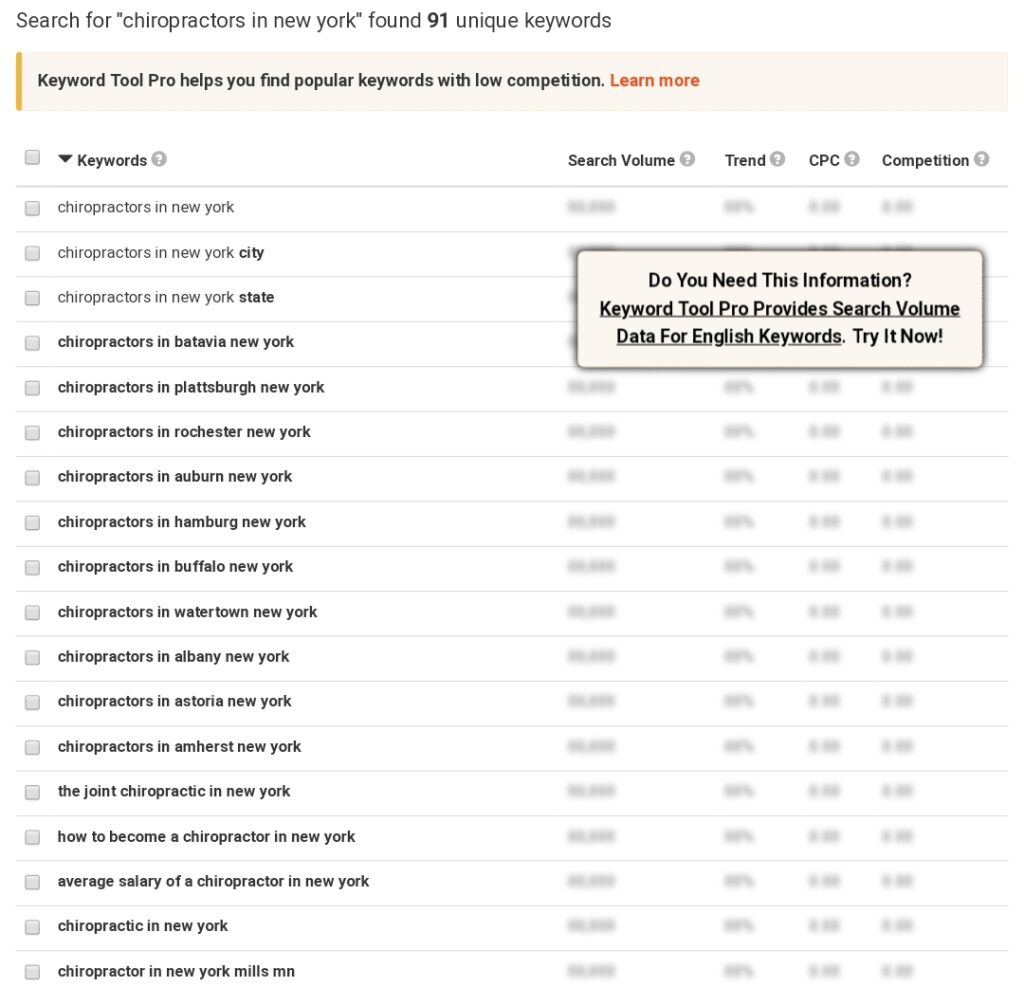
Ubersuggest helps you to carry out keyword research with details about your main keyword and similar keywords. To use the tool, enter your keyword and select the country you’re targeting. Click on “Search.”

This will show you details like search volume, SEO difficulty, paid difficulty, and cost per click (CPC) of the keyword.
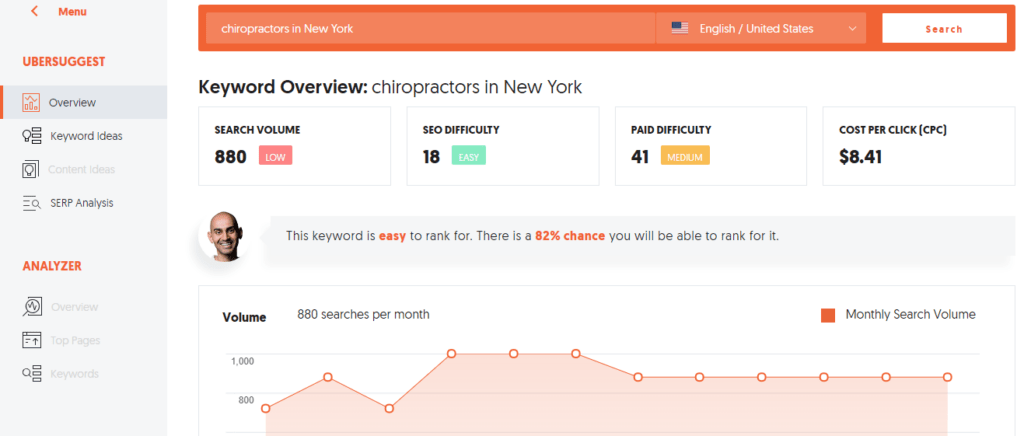
You can also get keyword ideas with similar keywords to the one you’re searching for.
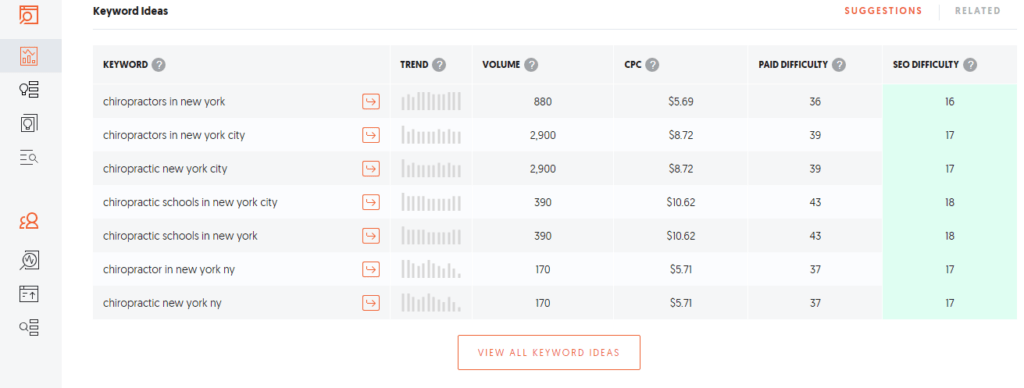
Another detail you can have is the SERP report. This will show you the websites currently ranking for your keyword. In this case, other chiropractic websites. That way, you can know the competition you’re up against.
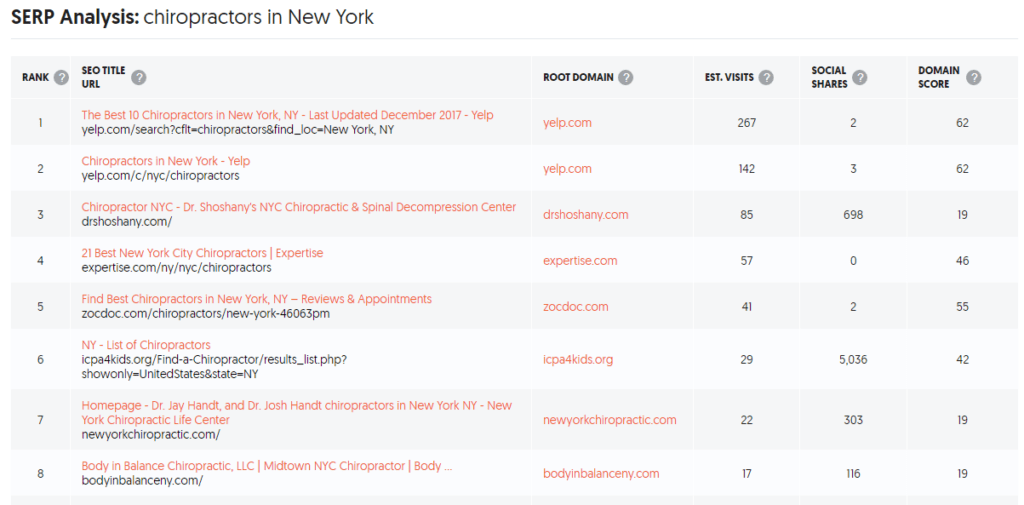
After using the keyword research tools, you can compile a list of 20 – 100 keywords you can target. It’s vital to compile keywords that have a considerably high search volume.
Likewise, your keywords should include your practice location (such as chiropractor in Los Angeles, Chicago Chiropractor) to take advantage of local searches.
After compiling the keywords, the next step is to create content. This is the way to convince your website visitors to call your phone line, fill out your contact form, or visit your office.
According to Google search quality guidelines, your page will have a better chance of ranking high for your target keyword if you ‘focus’ on high-quality content.
Of course, you have to listen to your audience to understand what pain points they have and how to solve it, says Jeff Bullas.

Creating high-quality content isn’t a one-time thing, you have to stick to it for at least three months to keep your chiropractic website fresh and easily index-able by the search engines.
You need a strategy to guide your content creation. Some key factors to consider for content creation strategy are blog post frequency, post quality and length, and type of content.
To make your content creation effective, you need to set a frequency. For some blogs, especially those with multiple contributors, there are daily posts.
Some are convenient with posts twice a week, weekly, or once in 2 weeks. Whatever frequency you choose, it’s important to keep at it.
According to a study by HubSpot, companies that published more than 16 blog posts monthly got 4.5X more leads compared to companies that published 4 or fewer posts.
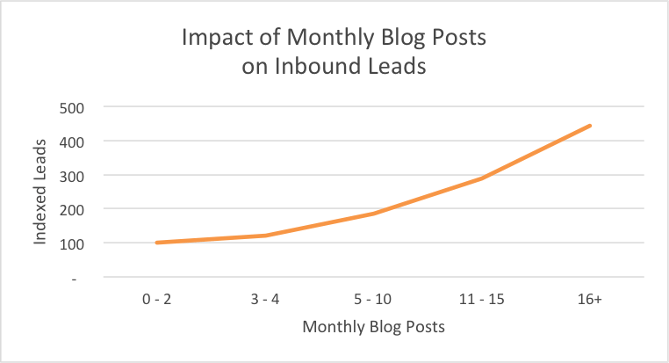
This doesn’t mean you have to publish a blog post daily.
You can achieve your organic traffic goals while posting once a week, as long as the posts are comprehensive, well-researched, helpful, actionable, and evergreen.
What’s more important is the quality of your posts.
What constitutes a quality post? The main feature of a quality post is that it’s able to provide the right information that people need. This information should be able to solve their problems or tell them how to solve it.

Is there an ideal length for a quality post? Is there a particular length that will get your post to rank number #1 on Google for your target keyword?
According to an analysis of 1 million search results by Backlinko, Brian Dean found that the length of an average post at the top of Google search results is 1,890 words.
Added to that, there’s a correlation between word count and the position of a page in the search results.
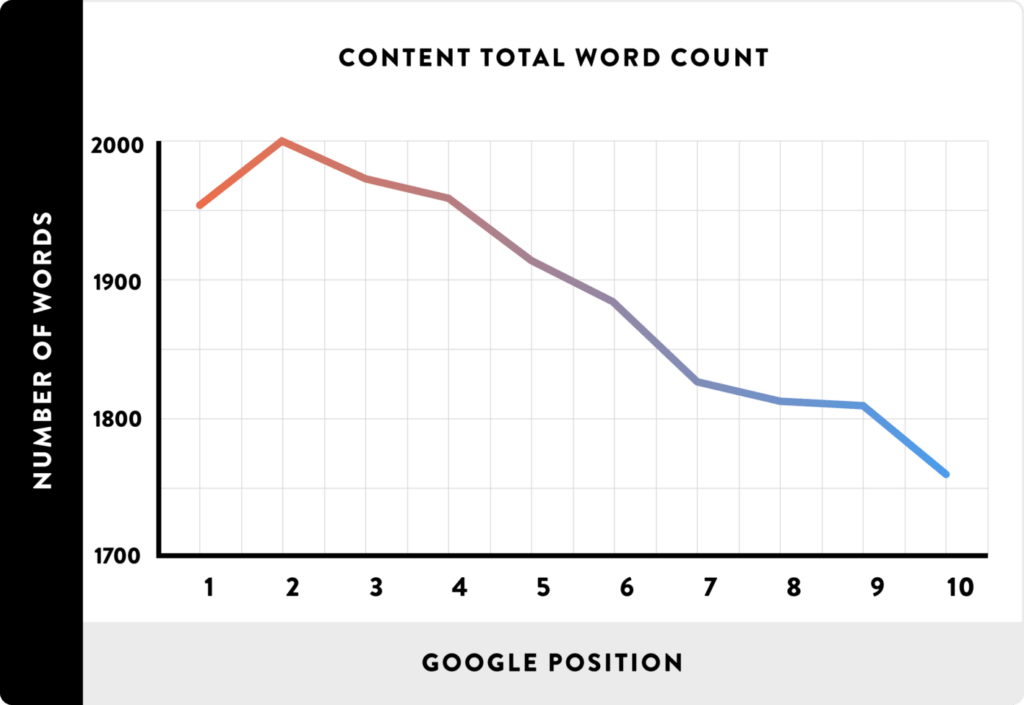
Does this mean that a long post will automatically rank at the top? No.
But it’s almost impossible for a short post to perform better than a long-form post in the search engine results.
For you to explain a chiropractic concept in details, for example, you need to go in-depth. Imagine if you were to write a book about Chiropractic adjustment techniques.
How many words do you think it’d take to drive your message home?
Certainly, a 500-word article will not cut it. You’d need 2,000 to 30,000 words if you must cover all the techniques, their benefits, and how to implement them.
Generally, a wide topic will require a higher number of words to explain in details than a narrow topic.
Written content is the most popular type of content. But there are other types of content you can produce to give your website a better chance of ranking.
Some of them are:
Infographics
Videos
Podcasts
Presentations.
Having a content strategy will help you to produce the right content to rank higher and convert the organic traffic to patients. This presentation shows you more content formats to create.

Book a Free Consultation with Scott Keever
With a chiropractic practice, an image can say a thousand words. Pinterest is a social media platform for infographics and other visuals.
It’s a popular platform among women and should be your target if you want to attract more female patients.
With a Pinterest board or page, you can share your chiropractic infographics through pins and re-pins of other people’s images that relate to healthcare and chiropractic care.
Below is an example of Dr. Josh Axe’s Pinterest page with 412,000 followers. He uses this page to share images on health tips and chiropractic practice.
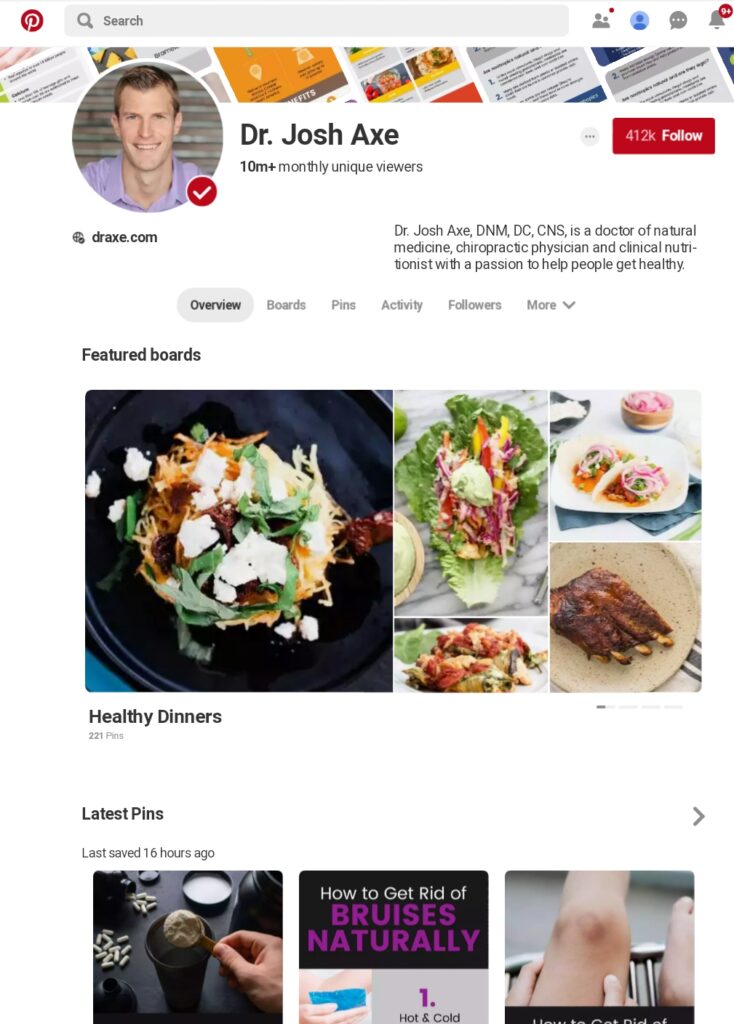
Since Pinterest is a visual social media platform, I bet you’d want to learn how to use it to market your practice and attract more patients.
To be on the same page and not bore you with texts (when it’s really about images), here’s an infographic that shows you Pinterest marketing strategies.
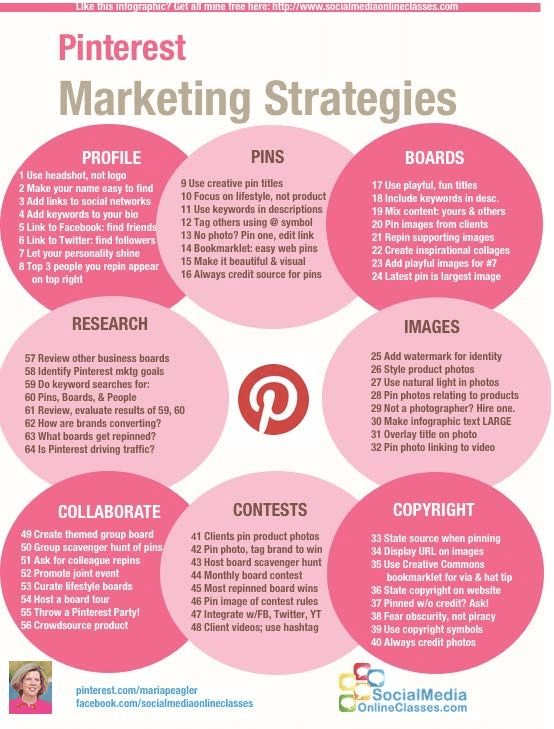
In the chiropractic and health industry generally, there are influencers who can give your practice a lift due to their authority in the industry.
These influencers could be authority bloggers, popular health care professionals, forum experts, or social media influencers.
When you build a relationship with these people, they can vouch for your business. In fact, when an influencer tweets your content, it can increase purchase intent by 5.2 times according to this study.

These influencers are trusted by their followers and will take their recommendations seriously.
About 70% of millennial consumers (which includes patients who are seeking a chiropractor) are influenced by the recommendations of their peers when deciding who to hire or what products to buy.
In some cases, an influencer could be your patient.
You can incentivize them and have them talk about your chiropractic practice on their blog or social media page.
To ensure that your website is listed in search engines, you need to submit your sitemap to Google Console.
A sitemap is a document that tells search engines bots the pages on your website to crawl and index. Through your sitemap, you can also exclude some search bots.
To submit your sitemap, create a free account or log into your Google Search Console dashboard. Click on “Sitemaps” from the left panel.

This will lead you to a page where you can enter your sitemap address.

After a period of time, you should check the number of your website pages on Google index.
If your page is absent on the Google index, there’s no way it’s going to rank for any keyword. To check your indexed pages, click on “Coverage.”

This will show you the number of pages with errors, valid pages with warnings, valid pages, and excluded pages.

With this information, you can see pages with issues and rectify those problems. In some cases, Google will alert you of any coverage issue on your website. You should resolve these issues as soon as possible.
With pages having heavy media content, their size increases and the loading speed decreases. However, website visitors tend to bounce away from your website if it takes too long to load.
Having a fast-loading website means you can reduce your bounce rate and increase visitors’ dwell time. These are positive signals that improve your search ranking.
A study found that 25% of your website visitors would have bounced by the time it loads for more than 4 seconds.
As the load time increases, the bounce rate also increases. In the same vein, a faster page speed leads to a lower bounce rate.
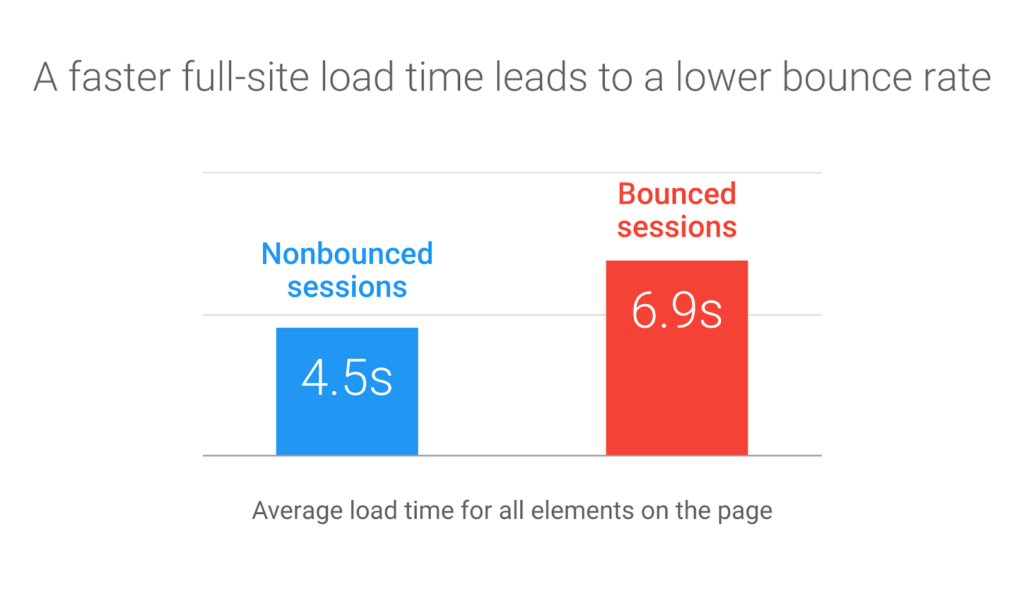
To test your website speed, you can use Pingdom test tool. Enter your website address into the tool, select the test server, and click on “Start Test.”
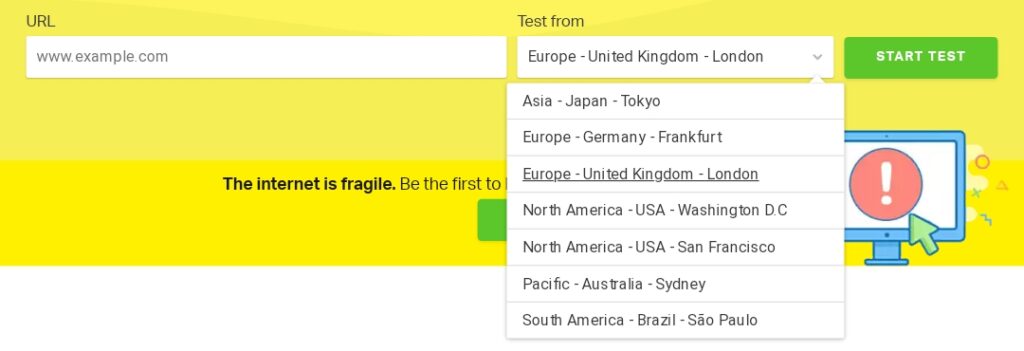
You’ll see details like your website load time, page size, number of requests, and other details.

Added to this, Pingdom will show you actions to take to improve your website speed.
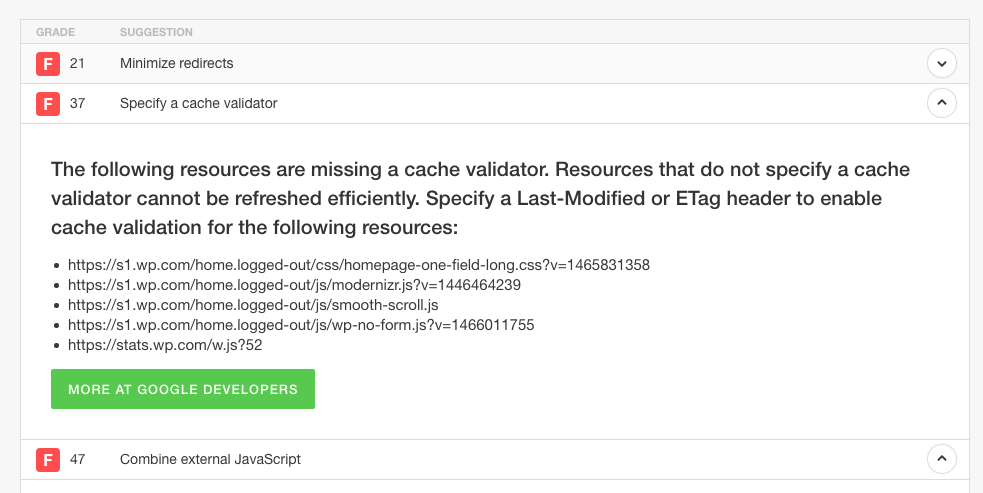
An integral part of local SEO is your business citations on local directories. This helps to show search engines that your business is credible and trustworthy in your location.
A study by BrightLocal found that pages that show up in the top 3 positions of local searches have an average of 85 local citations.
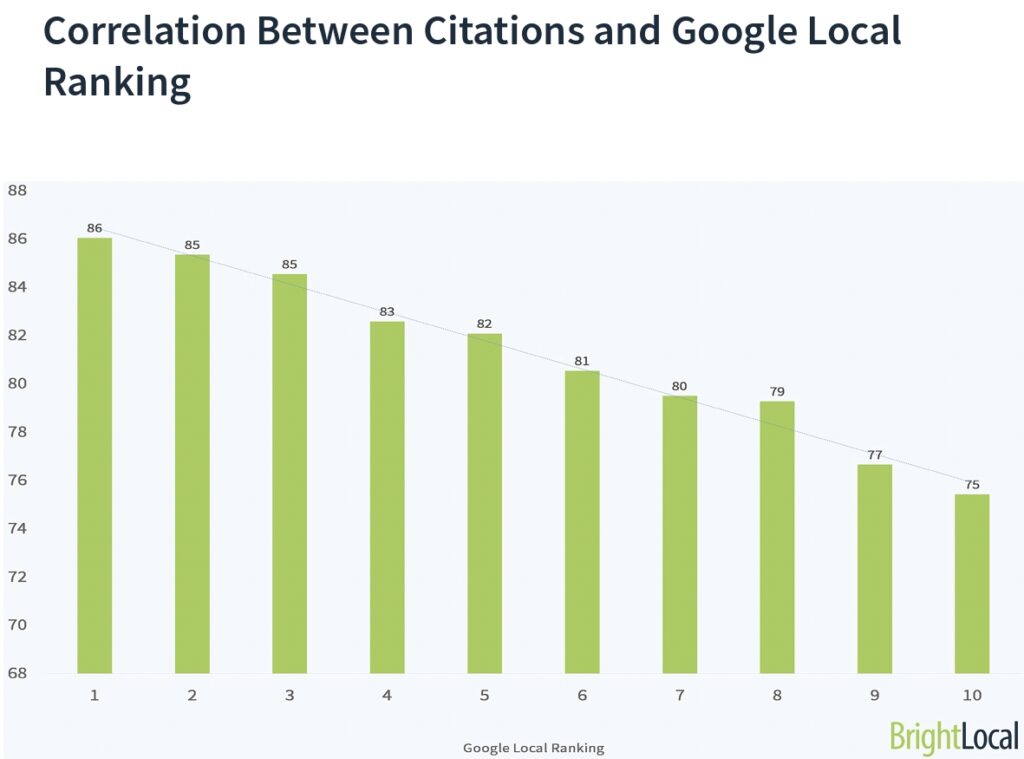
Some local directories you can add your practice to are:
Google My Business
Bing Places for Business
Yelp
ZocDoc
Usadatabase.org
Expertbackpainchiro.com
Spine-health.com
Foursquare
Healthgrades
Best-chiropractors.org
Manta
Angie’s List
Wellness.com
Yellow Pages
This is an example of a chiropractic practice listed on the ZocDoc directory.
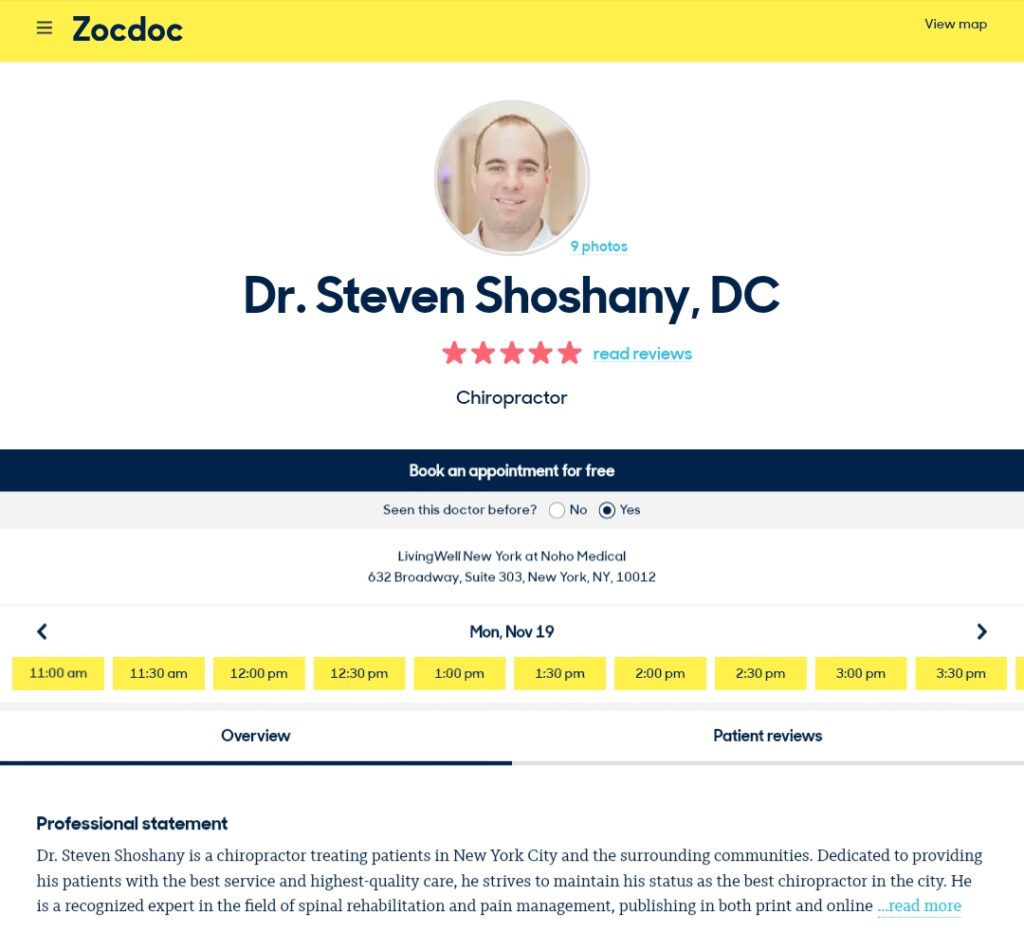
While adding your practice details to local listings, it’s vital to note that your practice name, address, and phone number (NAP) should be consistent across all local listings. Use the same format throughout the web, even on your contact page.
For search engines to produce local results, they have to check through local listings to establish your business’ credibility.
Having different details on different directories confuses search engines and this can lead to a lower ranking for your business in the search engine.
A Google My Business page is one of the most important local listings you can add your business to.
It gives you a better chance of appearing in Google local map pack that displays 3 local businesses for a local search in your city, state, or country. Here’s an example:

Your page contains important details like your NAP (business name, address, and phone number), opening hours, website address, a map of your location, images, reviews, and other details.
With this page, a visitor to it can get all the details they need to get in touch with you or book an appointment.
To create a business page, visit Google My Business and click on “Start Now.”

You can fill in your practice details in the following pages. After doing this, you can verify your business using one of the options Google will provide you.

That’s all, you can manage your business page on Google maps now. It’s important to add posts to your page to keep it updated regularly. This could include new developments in your practice and promotional offers.
This is an example of a chiropractor’s Google My Business page.
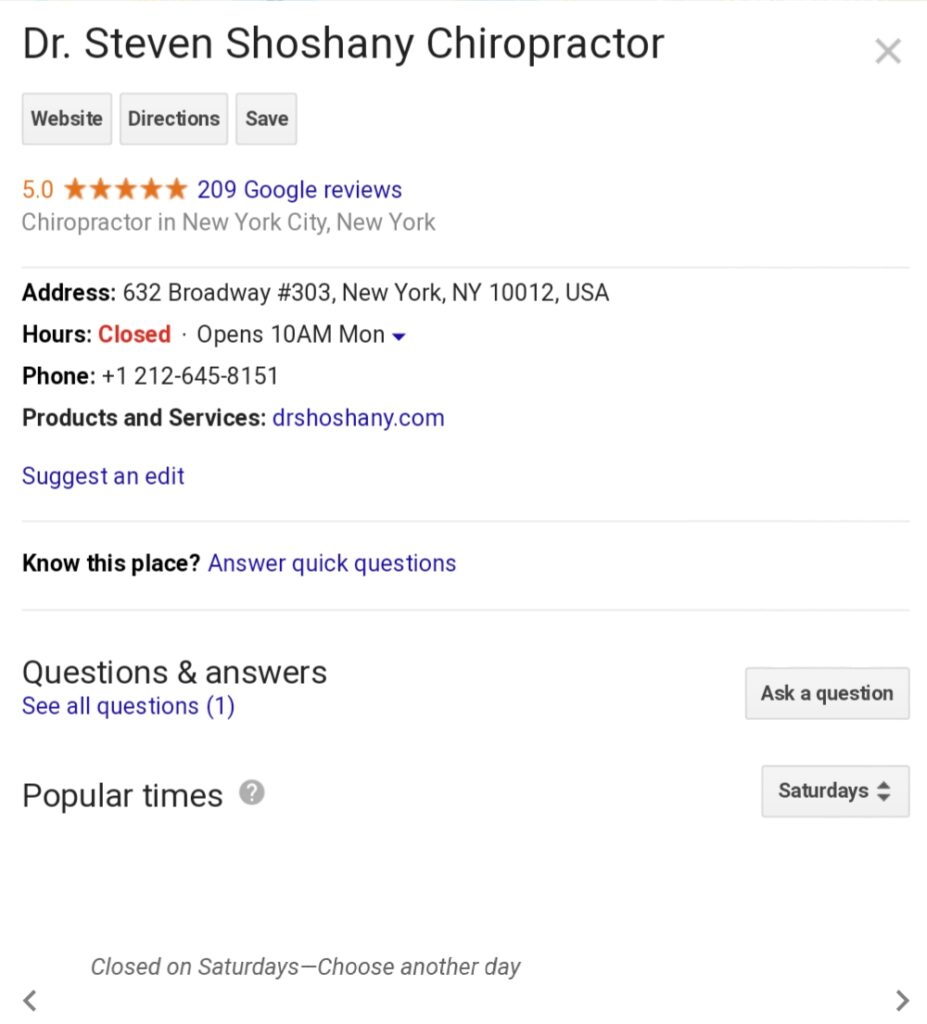
How do you convince potential clients of your expertise?
One of the best ways is to let your current and past clients tell them. Reviews are a way to promote your business. It’s free and more trustworthy than online ads.
Of course, I’m talking about positive reviews. BrightLocal found that 85% of consumers trust online reviews as much as personal recommendations.
When your present or past patients talk about how great your service is, it’s easier to convince a potential patient/client.
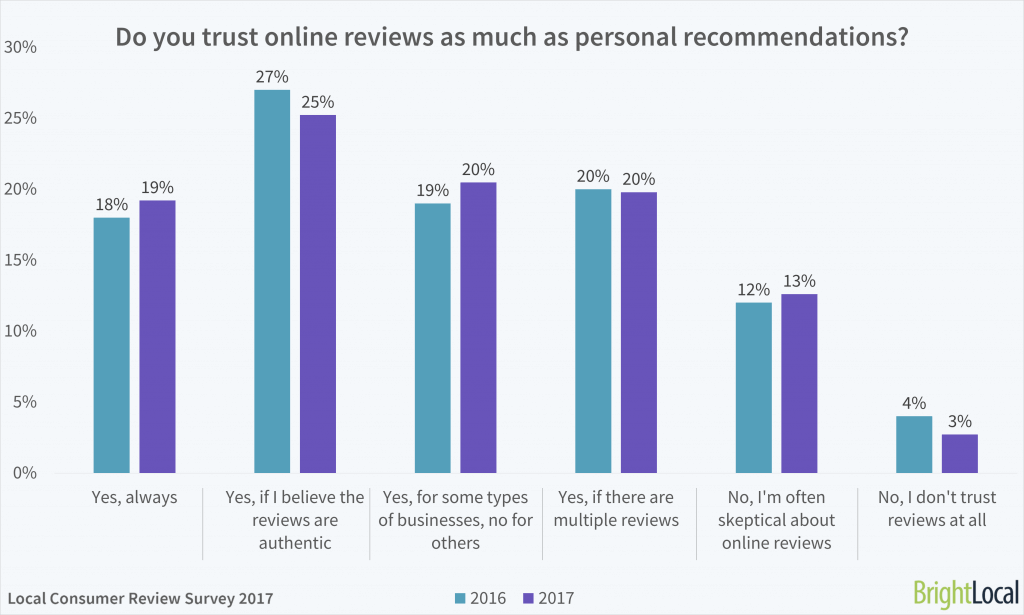
However, the reality is that most of your patients won’t drop reviews on your directory pages. You have to remind them and encourage them to do so after offering them a great service.
This is an example of reviews on a chiropractor, Dr. Steven Shoshany’s Google My Business page. You can also see that he gave replies to some of the reviews just to give more details about his practice and encourage other potential clients.
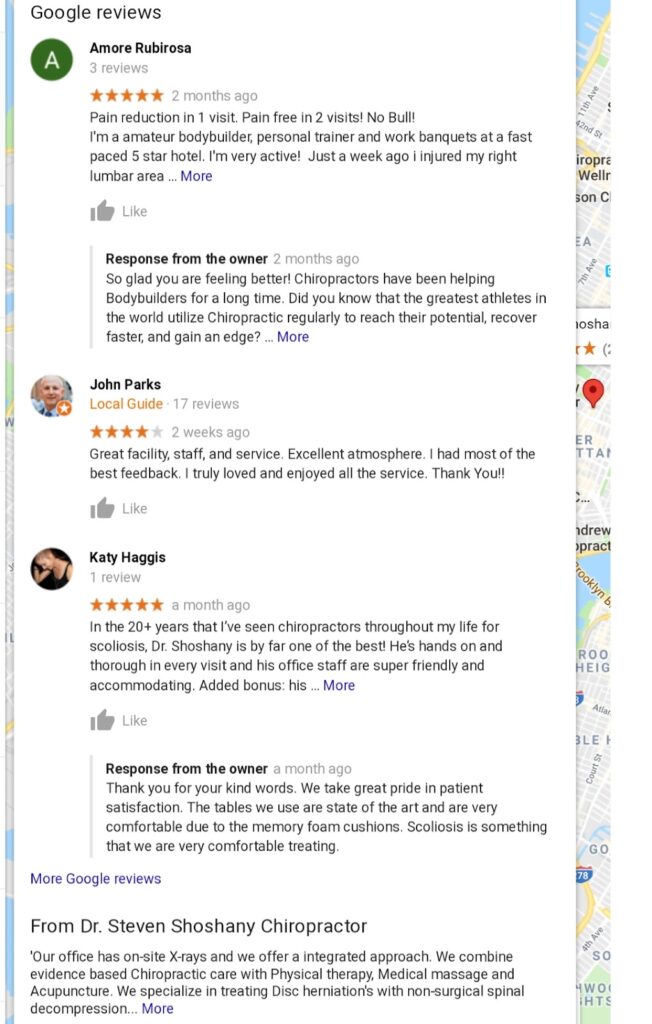
A sign of trust from other websites is backlinks. When a website links to your page, it means they trust your expertise and authority on that topic.
When you get backlinks from many websites, it shows that your content is trustworthy.
Backlinks are one of the 3 most important ranking signals along with content and Rankbrain, according to Google search quality analyst, Andrey Lipattsev.
As valuable as getting backlinks is, it’s also difficult to gain. Some ways you can build backlinks for your website are:
i). Posting on forums: Many people visit forums to get their questions answered by experts or people with knowledge. When you answer questions on forums, you improve your reputation as an expert. Likewise, you can use this opportunity to build links.
If there’s a post on your website that answers a poster’s question in details, you can link to it after your reply. Of course, you should only do this when your web page is relevant to the question.

Above is a question on Quora and below is an example in which Neil Patel answers the question briefly and links to a related post on his website.

iii). Guest blogging: This is an opportunity to reach new audiences and potential clients. It’s an opportunity to establish your position as an expert in your industry.
Added to that, it’s an opportunity to gain an editorial backlink to your website. When you guest blog on authoritative websites, it can have an even bigger positive impact on your search rankings.
It’s important to guest blog on websites that are related to your practice as they help you to rank higher in the search results.
This is a guest post by Dr. Sharonrose Samelak on “Bodies for Birth” about chiropractic care in pregnancy. You can see an editorial link to her website in the author bio of the guest post.
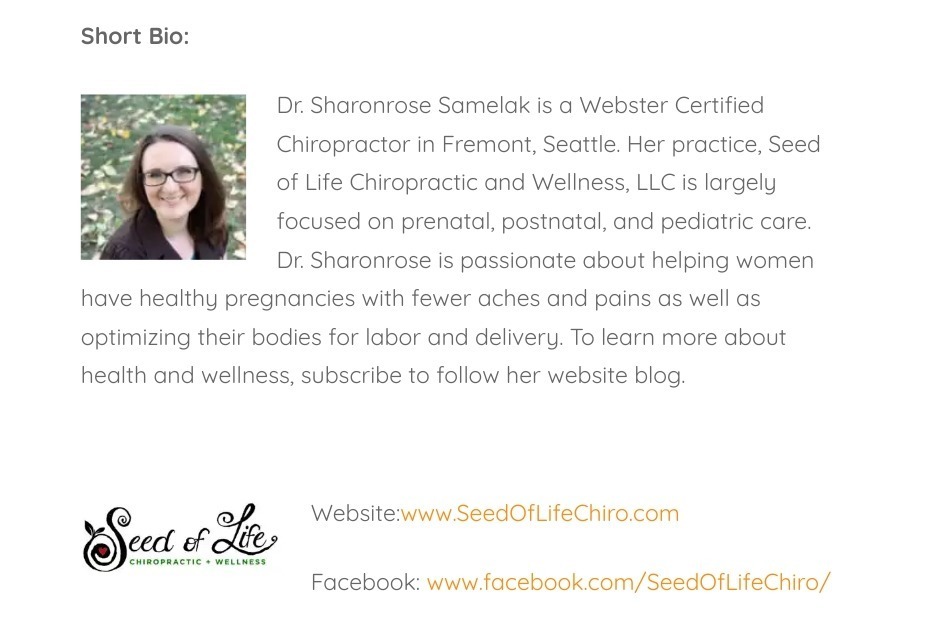
iv). Host or participate in local events: Hosting or participating in local events is an opportunity to meet many other local professionals.
Also, you can meet potential clients at these events. In some cases, you can meet journalists and bloggers. They can mention your practice when reporting the event and add a link to it.
This is an example of Dr. Steven Shoshany presenting the updated NYC Marathon Readiness Protocol. PRWeb featured the news on its website and provided 3 backlinks to Dr. Shoshany’s website.
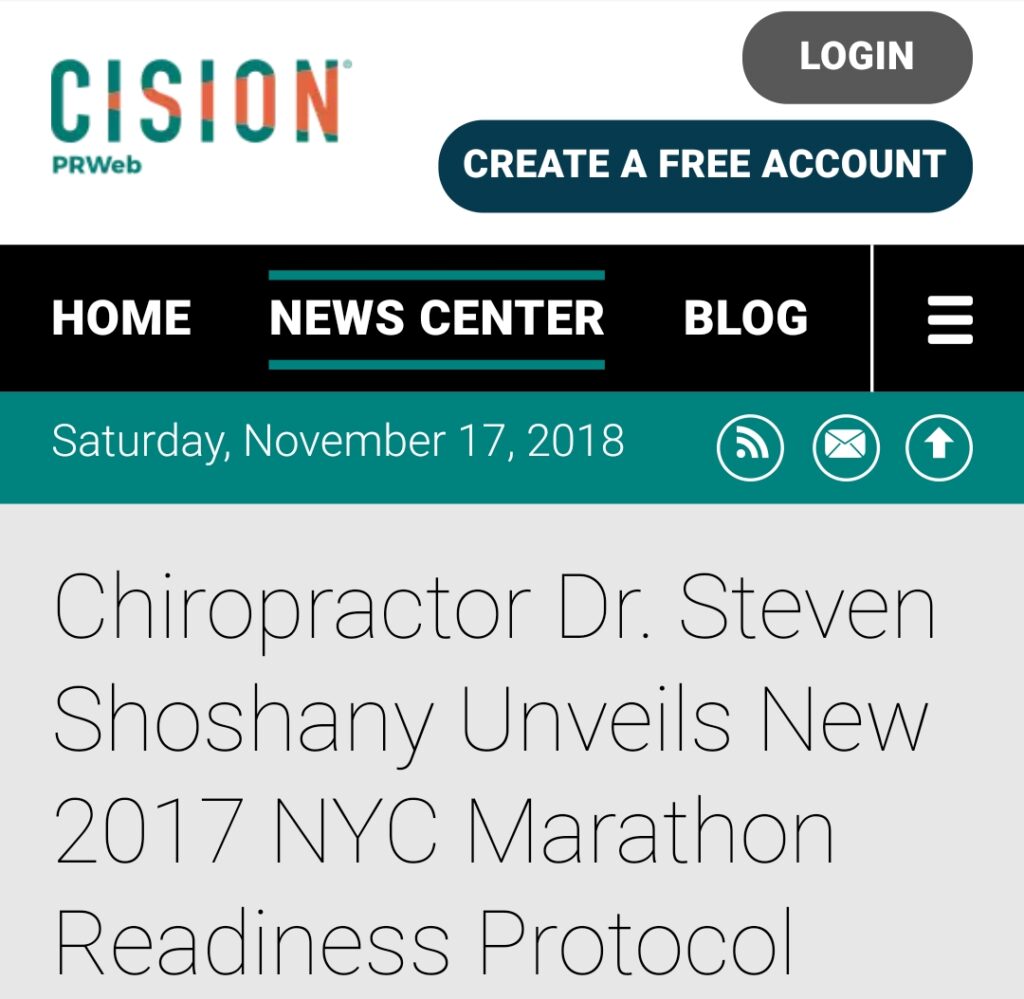
Getting your website to rank high in search engines isn’t rocket science. However, it requires hard work and taking the right steps.
This post is a checklist of steps to take to get your website high for important chiropractic keywords that will generate leads, patients, and revenue for your practice.
Do you have questions about ranking your website in Google top 10 results? Ask Scott Keever today.CEO, Keever SEO

How to Improve SEO for Therapists and Counselors [Rank in Google]…..

As a lawn care and landscaping specialist, your work makes homes more beautiful…..

The Step-By-Step Guide To Real Estate SEO By KeeverSEO Team3 August 2023 . 2 min read Share this post Request
©2025 Keever SEO. All rights reserved.